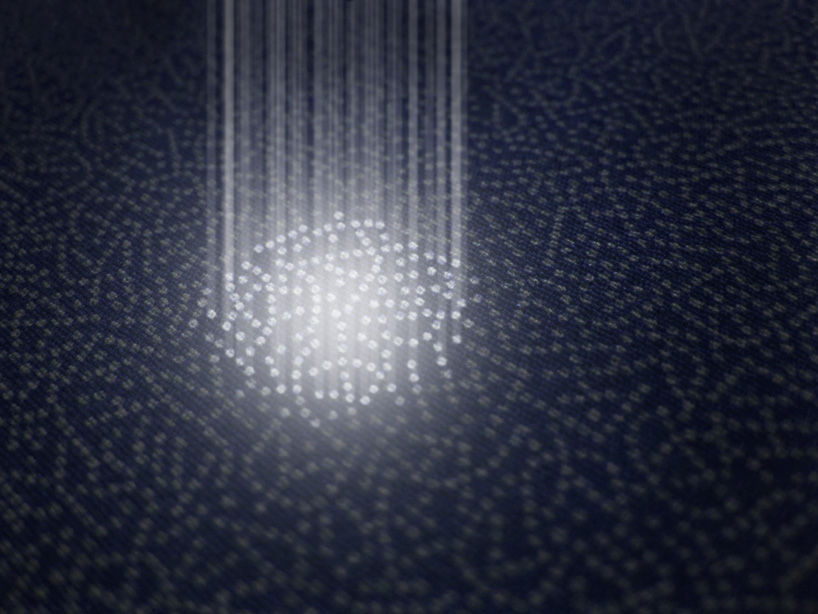
IKIRU "Edo-Komon" - Revitalizing the Delicacy by nanako tani from finland
designer's own words:
“Komon” is a type of kimono. Adorned by very small patterns, from afar the fabric seems plain. This traditional design dates back to when there were decorating restrictions during the Edo-period. These restrictions actually forced new, precise techniques to develop. The “Edo-komon” now refers to the kimonos which are made of single-colored silk.
To create the delicate dots, pattern papers are cut out by professionals. Around 800 to 1200 dots are opened within a 9cm x 9cm square. Glue is applied on top of the pattern paper onto the kimono fabric, which prevents the dyeing in those precise parts.
The dye master and the pattern creator are inseparable, and few of them exist nowadays.
Wishing the tradition's longevity, I dream of a “edo-komon” fabric that can exist in a more larger scale.
It can revitalize a space, surround multiple human beings, and change its feel continuously with the slightest amount of wind.
When the “edo-komon” is printed onto translucent fabric, the glue-resisted pattern lets light through. The intricate patterns dissolve in space, and the effect can be developed further with multiple layers and colors.
Why not live with a touch of tradition - hints of delicacy - in our surroundings?
If the “edo-komon” is printed onto translucent fabric, the glue leaves dot patterns which let light through.
Taken out of the clothing context, an “edo-komon” fabric could revitalise a space, interacting with light and movement.